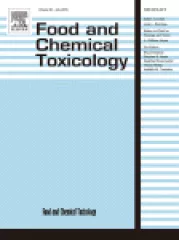- | Academic & Student Programs Academic & Student Programs
- | Regulation Regulation
- | Public Interest Comments Public Interest Comments
- |
Linear No-Threshold Model and Standards for Protection Against Radiation
Before the Nuclear Regulatory Commission
After reviewing the NRC’s mission, its legislative mandates and constraints, and recent research on low-dose radiation, there appears to be strong evidence to support reconsidering the LNT as the default dose-response model for ionizing radiation.
In response to the three petitions by Carol S. Marcus, Mark L. Miller, and Mohan Doss, dated February 9, February 13, and February 24, 2015, respectively, the Nuclear Regulatory Commission (NRC or the Commission) has announced that it is considering assessing its choice of dose-response model, the Linear No-Threshold (LNT) model, for exposure to ionizing radiation. More precisely, the petitioners have proposed that the Commission amend 10 CFR Part 20, Standards for Protection against Radiation, to reflect the latest scientific understanding and evidence in support of low-dose radiation hormesis as a potentially more plausible default.
The petitioners argue that (1) the LNT assumption has never been validated and is still lacking scientific support; (2) there is vast scientific evidence, grounded in biology, genetics, clinical experiments, and ecological and epidemiological studies, in support of the existence of a low-dose radiation threshold and, even more so, of low-dose radiation hormesis; and (3) the LNT assumption is retarding public health by limiting the potential therapeutic application of low-dose ionizing radiation in treatment of diseases, especially cancer.
In light of these claims, two of the petitioners have made the following recommendations: “(1) Worker doses should remain at present levels, with allowance of up to 100 mSv (10 rem) effective dose per year if the doses are chronic. (2) ALARA [as low as reasonably achievable] should be removed entirely from the regulations. . . . (3) Public doses [exposure] should be raised to worker doses.” One petitioner also requests that the regulation be changed to “(4) end differential doses for pregnant women, embryos and fetuses, and children under 18 years of age.”
This comment extends the petitioners’ argument in favor of reexamining the default hypothesis (LNT) and taking consideration of low-dose hormesis for the following reasons:
1) Failure to review the LNT hypothesis may jeopardize the NRC’s mission to protect public healthand safety. Research on hormesis suggests that low doses of ionizing radiation may be protective of public health. If true, regulating exposure to ionizing radiation according to the ALARA principle may be harmful to public health if it regulates beneath the optimal hormetic dose.
2) The National Research Council’s guidelines for choosing adequate defaults indicate that the choice of low-dose default model is due for a reevaluation. The NRC should conduct a systematic review of evidence, as recommended by the Council guidance, to determine the comparative weight of hormesis and LNT.
a. If the systematic review reveals hormesis to be “clearly superior” to LNT, then the NRC should abandon LNT and adopt hormesis.
b. If the systematic review reveals hormesis to be “comparably plausible” to LNT, then, in light of both models, the NRC should conduct a quantitative model uncertainty analysis, present alternative risk assessments, and update its standards of protection accordingly.
c. If the Commission decides to maintain adherence to LNT after, or without, conducting the systematic review of evidence, then the Commission should demonstrate why the body of evidence in favor of hormesis is inadequate for consideration under the NRC’s IQA guidelines. Further, the Commission should demonstrate how the studies that support its low-dose LNT assumption conform to the NRC’s IQA guidelines.
To speak with a scholar or learn more on this topic, visit our contact page.


